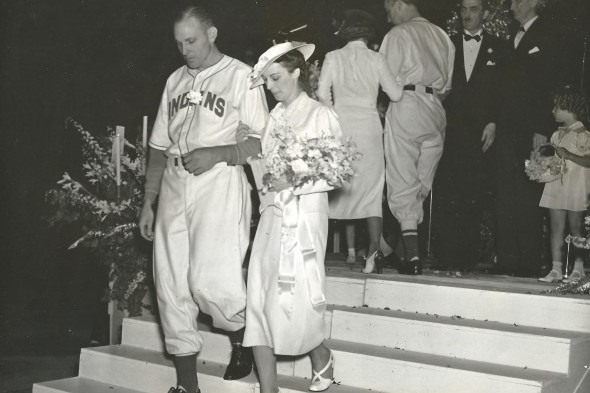
By David Eskenazi and Steve Rudman
Based on written accounts and eyewitness testimony, the only possible conclusion is that Civic Field ranked as a first-rate eyesore. Located where Memorial Stadium stands (but not for long) in the Seattle Center, Civic Field went up in 1928 and met a wrecking ball in 1945 to the chagrin of no one, save perhaps Arthur (Mike) Hunt, who had excellent reasons to adore this junker of a ballpark.
Constructed primarily for high school football, and also used for boxing matches, Civic Field served as part of an athletic complex that included the Civic Ice Arena (currently the shuttered Mercer Arena) and Civic Auditorium, where the Seattle Opera House is now located. Between the three (and Crystal Pool in downtown Seattle) these facilities for many years hosted most major sporting events in Seattle not associated with the University of Washington.
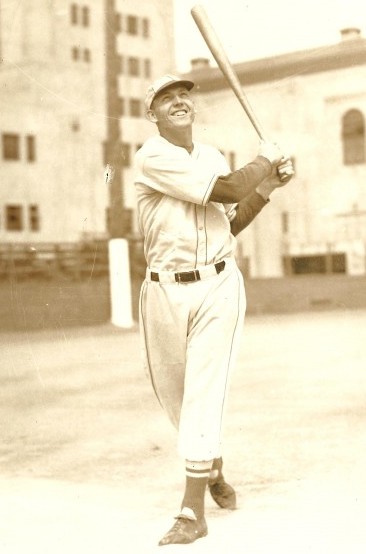
By far the biggest event staged at Civic Field, even bigger than an Oct. 18, 1934 appearance by Babe Ruth, Lou Gehrig and a troupe of barnstormers, occurred July 26, 1938, when Seattles Al Hostak and Tacomas Freddie Steele fought for the National Boxing Associations World Middleweight title, a bout won by Hostak and refereed by former heavyweight champion Jack Dempsey that attracted a record Seattle crowd of 35,000 (see Wayback Machine: Freddie Steele vs. Al Hostak).
Normally, Civic Field accommodated 9,000 spectators in its grandstands and bleachers, and the last sport it was designed to host was baseball. But Civic Field became a baseball park almost overnight in fact the night of July 4, 1932 when serial arsonist Robert Driscoll saw fit to torch Dugdale Park, the Rainier Valley enclave (Rainier Avenue and McClellan Street) of the Pacific Coast Leagues Seattle Indians (see Wayback Machine: A Fire That Changed Our Sports).
With no other option available, the Indians hastily moved into Civic Field, which lacked any grass, sported splintered old boards for seats, and wooden light poles that obstructed views and presented a physical hazard to anyone chasing a fly ball. Most players loathed Civic Field, especially its playing surface.
If a horse got stranded out there, former Rainier great Edo Vanni told Dan Raley of The Seattle Post-Intelligencer in 2000, it would starve to death. It was nothing but rocks.
It was like playing on Aurora Avenue, Bill Kinney, a former Civic Field groundskeeper, told Raley, who reported that one visiting player refused to play on the surface and sat out an entire, seven-game series.
In the heat, the sun baked the grounds into hardpan, so that a sharply hit grounder could roll all the way to the center-field fence, 450 feet from home plate, or to the gooseberry bushes 360 feet down the right-field line. But when it rained, the field turned to mud. Depressions and bumps pocked the uneven playing surface.
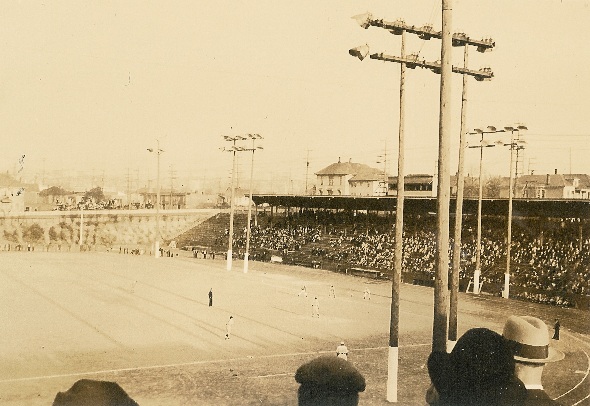
One of these days, somebody is going to break his neck out there, Indians manager Dutch Ruether complained in 1935.
Civic Field offered little ambiance Seattle reporters referred to it as The Rockpile — but it had one notable feature: the left-field line measured just 265 feet, a veritable putt for guys such as Hunt, who stood 6-foot-4, weighed 196 pounds and whacked numerous home runs that reportedly traveled farther than 400 feet.
Hunt harbored another soft spot for Civic Field. It was there that he met his future wife, Charlotte Axelson, and also where, on July 8, 1937, Hunt and Charlotte became centerpieces in the social event of that year in Seattle, or any year in the 1930s, for that matter.
By July 8, 1937, Hunts baseball career had peaked. Nicknamed Moose and Old Baggy Pants, the latter for the manner in which his baseball trousers hung on him (He was the first ballplayer I ever knew who wore his pants down below his ankles, Edo Vanni told The Seattle Post-Intelligencer), Hunt was the acknowledged home run king of the Pacific Coast League and a Seattle celebrity whose autograph became a much-coveted prize, especially among the Queen Anne youngsters who frequented Civic Field.
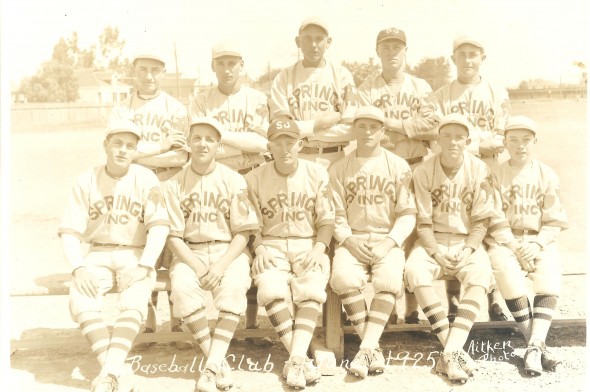
Born Oct. 12, 1907, in Santa Clara, CA., Arthur Leland (“Call me Mike”) Hunt grew up in San Jose. He played baseball at Lowell Grammar School and San Jose High School and began his professional career as a 20-year-old in 1927 with the Pocatello Bannocks (or Spuds) of the Utah-Idaho League, a Class C operation that included the Logan (UT.) Collegians, Ogden (UT) Gunners, Salt Lake Bees and Twin Falls (ID.) Bruins.
Published reference works do not list Hunt as playing anywhere in 1928, but he actually spent that season, according to a scrapbook Hunt maintained, in the Copper League, a small, independent Utah league founded by the Kennecott Copper Company for the benefit of its employees (Kennecott created the league mainly to keep its employees from unionizing).
Exactly how Hunt found work in the Copper League isnt clear, but the circuit included four clubs in Kennecott company towns within 30 minutes of Salt Lake City: sagebrush clogged Magna, Garfield and Arthur out in the desert west of Salt Lake, and Midvale to the south. Arthur is now a ghost town and Kennecott literally dismantled Garfield in the 1940s. Hunt played for Midvale, which used him as a pitcher and outfielder.
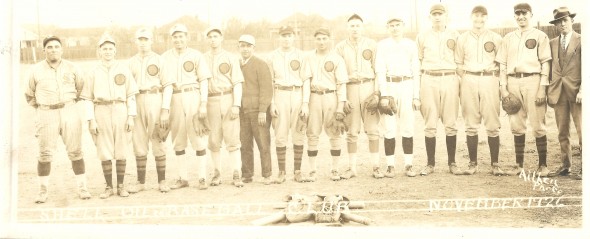
According to accounts in the scrapbook, Hunt played one of his better games July 28 at Garfield, when, reported The Salt Lake Tribune, Hunt was the sensation of the day, collecting five consecutive blows and drawing a walk in his sixth appearance at the plate, a homer and a double being included in his days work. In the eighth inning, Hunt brought the crowd to its feet with a dazzling, one-handed catch of Andersons hard-hit liner to right field.
Hunt split 1929 between the Class D Tucson Cowboys of the Arizona State League (.328 BA with four homers in 31 games) and the Class D San Bernadino Padres (.360, four HRs) of the California State League, and divided 1930 among the Globe Bears and Miami Miners of the Arizona State League and Mission Reds and San Francisco Seals of the PCL.
Hunt belted 23 homers combined in 171 games for Globe, Miami, Mission and San Francisco, providing the first hint that he was a home run hitter in the making.
This guy is going to hit, San Bernadino manager Rube Ellis told The San Bernadino County Sun. All he needs is experience and hes going to get that.
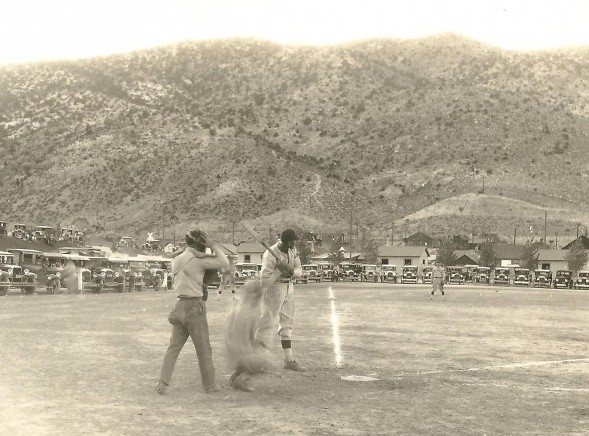
On June 9, 1930, according to an El Paso newspaper clipping in Hunts scrapbook, Hunt hit a homer, a single and a triple in five times at-bat, roamed left field like nobodys business, accepted five chances with flawless manipulation, and when the game was over had made himself the talk of the town.
With AA San Francisco in 1931, Hunt hit .303 with five homers in 76 games, and increased his totals in 1932 to .316 with 14 home runs in 151 games.
In mid-1932, the San Francisco Chronicle wrote, The Seals havent had an outstanding slugger since Smead Jolley cavorted in the outfield (1925-29). Jolley could and did hit ’em a mile, just as Hunt is doing this season. Theres no way to tell if Hunt hits the ball harder than Jolley, but Hunt hits an occasional drive that would best Jolleys longest hit. Hunt isnt long for the minors if he continues to hit ’em far, wide and handsome. He is the type of player every club in the majors is seeking, a right-handed hitter with a real punch in his bludgeon.
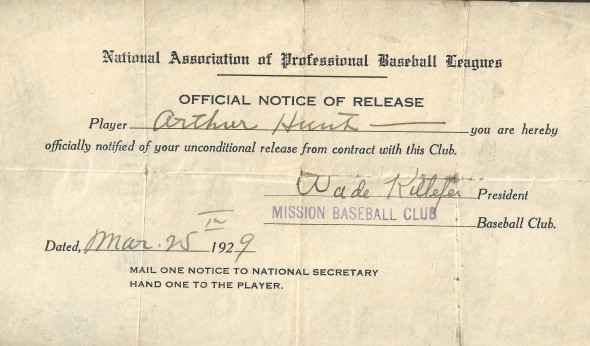
Following the 1932 season, the San Jose Mercury News contained this blurb: Not so many years ago, Mike Hunt was one of the many San Jose youngsters who saved their coins to purchase a brand of cookies that were popular because in each and every box was a photo of a major league ball player. Hunt was a great hero-worshipper. He went around with a stack of 50 or 60 photos in his pockets, dreaming of the day when kids would be seeking his photo.
Hunts dreams have come true. After struggling along for several years in Class D leagues, the local slugger hit his stride and made good with the San Francisco Seals. As a reward for his play, he was drafted by the Boston Braves and reports to the big leagues next spring.
The Braves paid the Seals $5,000 for drafting Hunt, who reported to their camp in St. Petersburg, FL., the following spring (1933). But Boston had a glut of outstanding outfielders, led by Wally Berger (299 major league home runs), and couldnt find room for Hunt, who played in several exhibition games, on its major league roster.
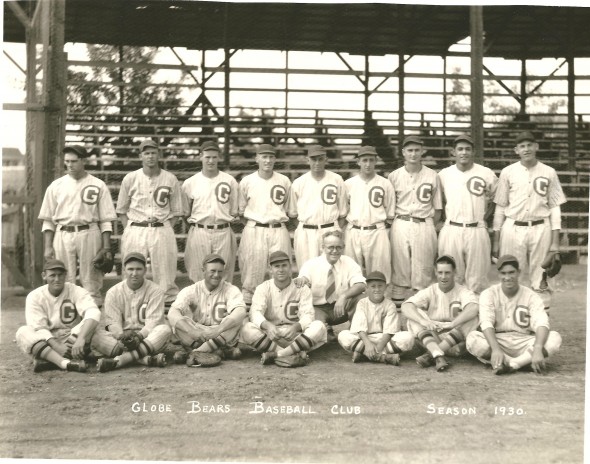
So the Braves optioned Hunt to the PCLs Mission Reds to complete an earlier trade they made for infielder Dick Gyselman (a future Hunt teammate in Seattle). In a matter of days, the Missions dispatched Hunt back to Boston, which farmed him to Wilbert Robinsons Atlanta Crackers of the American Association.
When the Crackers released the 26-year-old Hunt, his dream of playing in the major leagues ended, and he returned to the West Coast for what turned out to be the rest of his career.
Hunt re-signed with the Seals three weeks before the start of the 1934 season. But San Francisco had blossoming 19-year-old outfielder Joe DiMaggio, who came at a far cheaper price, $250 per month to Hunts $400. San Francisco decided to go younger and cheaper and released Hunt just after the start of the season. He signed with the Seattle Indians April 12, 1934.
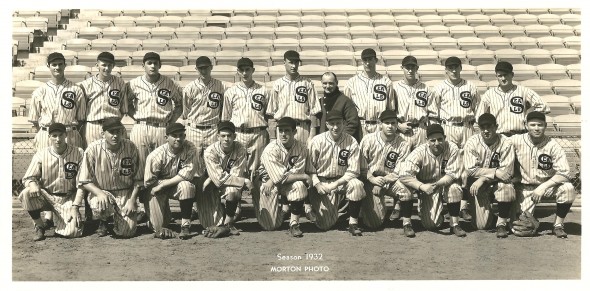
In part because he played in many parks unfriendly to hitters (particularly in San Francisco), Hunt never hit more than 23 home runs in a season before 1934. But with that inviting left-field porch at Civic Field, Hunt quickly elevated himself into a slugger of prominence.
He made his Civic Field debut April 17, George Burns final day as Indians manager (see Wayback Machine: Walter Ruether, ‘The Dutchman‘), hitting a first-inning homer far beyond the left-field fence. Hunt went on to bang a career-high 30 and also batted .346 with 223 hits in 175 games.
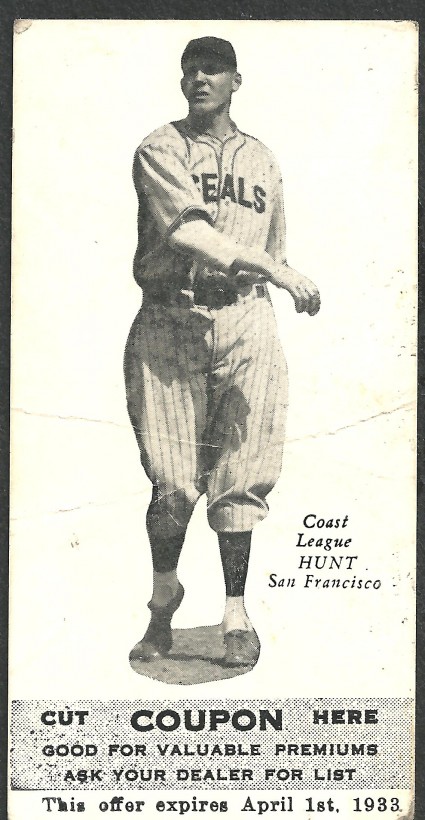
The cash-challenged Indians only briefly contended for a PCL pennant (mid-summer, 1934) during Hunts peak years (1934-37), finishing as high as fourth in 1936 (93-82) under Ruether, but probably would have been dreadful without him, and not nearly as interesting.
Vince OKeefe of The Seattle Times explained Hunts popularity this way: A wad of tobacco made his cheek puff out like a giant gopher.
“He had muscular arms and shoulders atop a lanky frame that could give a baseball a long ride and throw it almost as far. He was popular with all, particularly the youngsters.
Another Times scribe, Don Duncan, wrote: Every schoolboy in town could imitate Hunts rather stiff-legged walk to the plate in those baggy pants of his.
“There were a few menacing swishes with the Louisville Slugger, with the Spalding up, of course, and then a shifting of that ‘chaw’ of cut plug in his jaw. Hunt would direct a brown stream of plug into the dirt when he didnt like a call.
“To understand why Hunt was so big, one had to live in Seattle during those days when baseball was king. For one thing, players stuck around for a long time. Fans were loyal and vocal.
A 1934 newspaper clipping from Hunts scrapbook included this nugget: Hunt charms the populace with his golden voice over the microphone. Before the game every day, he makes the rounds of the population centers in Seattle, announcing from an automobile over a public address system that there is a ball game today.
“Hes sort of a modern Foghorn Murphy, the fellow in the old days who used to supply the same service in Seattle with a megaphone and a horse and buggy.
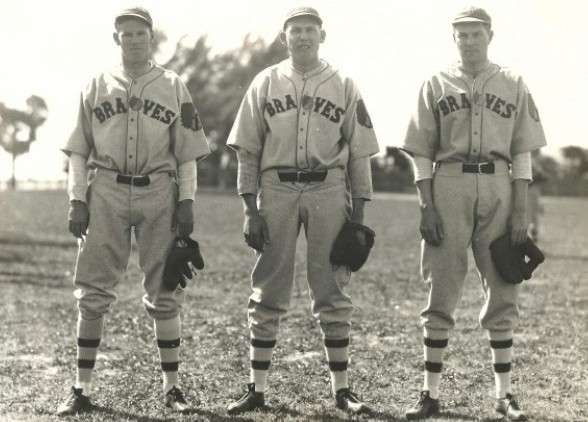
Hunt is also among the first six sluggers in the league. Between his two activities, Hunt has made himself a hero with Seattle fans, and only a few short months ago the Seals released him.
The press focused much attention on Hunts lust for tobacco chewing, even interviewing other players about it. In 1935, two newspapers in PCL cities proposed a tabaccy spitting contest between Hunt and Jim Stroner, third baseman for the Mission Reds. This is what the San Francisco Chronicle wrote in a far different sporting and social climate than now:
The presence of Mike Hunt, Seattle outfielder, here this week has brought up a question, Who is the tobacco chewing champion of the loop?’ At present, the players are divided into two factions, those who support Hunt and those who believe that none can compare with Stroner.
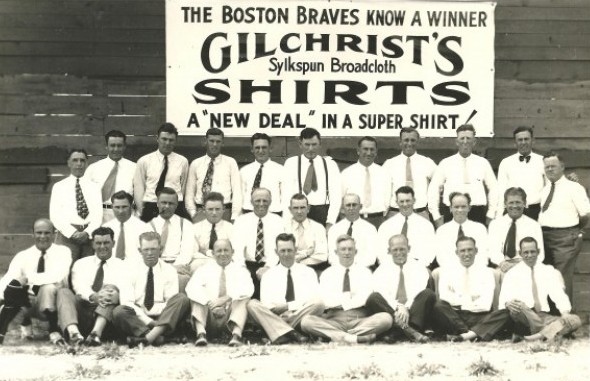
The Indians players claim that Stroner is an ordinary chewer because he uses tobacco made for chewing purposes only. They point out that their champion (Hunt) is a free-for-all chewer and will chew any kind of tobacco at any time. He prefers fine cut smoking tobacco as a diet. A couple of packages last him a ball game.
Stroners adherents rave about his staying powers. They say his gigantic wad will outlast Hunts two to one. Between the two, local fans are evenly divided. Hunt has played and chewed for both the Missions and Seals while Stroner is a strong favorite with the Reds.
A contest between the pair has been proposed. The rules have not been completed but are expected to (1) limit the number of swallows, (2) limit the number of chews per minute, (3) weigh the amount of tobacco chewed, 4) measure time between expectorations to determine staying powers.
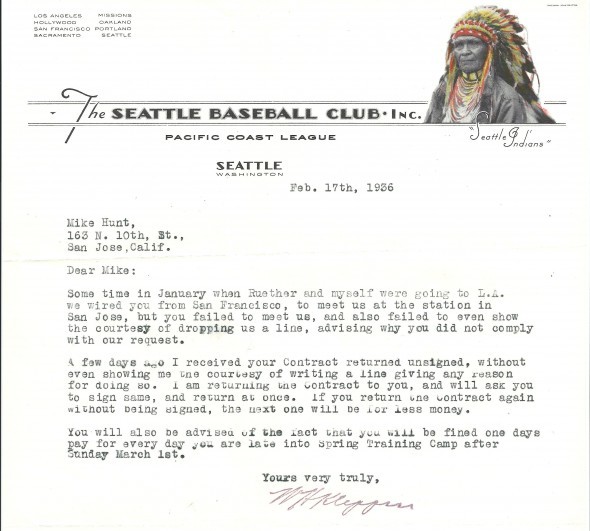
There may be other contestants. Johnny Fitzpatrick, Mission catcher, has a group of boosters and so has Jack Fenton, the Seal first baseman. Both Fitzpatrick and Fenton, however, have shown a lack of control. Each has swallowed his wad during the excitement of a ball game this year.
The Hunt-Stroner “tabaccy spitting” joust apparently never took place, and Hunt is not on any available record as having talked about it, or much about his prodigious home runs, either.
Hunt smacked 25 of them in 1935 (fourth in the PCL behind Gene Lillard, DiMaggio and Jolley), his second year with the Indians, to go with a .330 batting average, 45 doubles and 211 hits in 163 games.
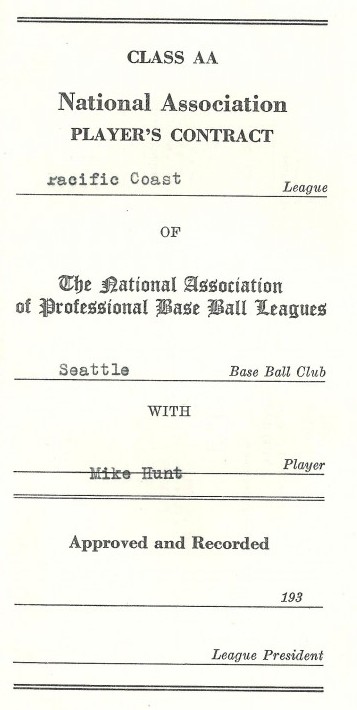
In 1936, Hunt hit .316, tied for the PCL lead (with teammate Freddie Muller) in home runs (30) and led the league in RBIs (135) and total bases (364). Hunts slugging percentage, .567, ranked third.
Hunts best year came in 1937 when he hit .312 with a career-high 39 home runs produced 131 RBIs, both totals leading the PCL. Hunt finished with 202 hits, 85 for extra bases, in 172 games.
Hunt never again approached those numbers. When, after Emil Sick purchased them, the Indians became the Rainiers, and moved into Sicks namesake ballpark in the Rainier Valley on the same site where Dugdale Park once stood, Hunts numbers suffered a deep decline.
In 1938 he hit .291 with 13 homers, and in two seasons at Sicks’ Stadium, where the left-field line measured 325 feet (331 feet at Safeco Field and 390 in the left-field power alley) he totaled just 28, 11 fewer than he hit at Civic Field in 1937.
Hunt had many, multi-homer games for the Indians and Rainiers, two of the most notable occurring in his final season in 1939.
On Aug. 4, Alan Strange and Hunt hit home runs on consecutive pitches in the ninth inning off Wally Herbert, giving the Rainiers an 8-5 win over the San Diego Padres.
Slightly more than two weeks later, Aug. 20, Strange and Hunt duplicated that feat against Sacramento.
Long after yesterdays scores are forgotten, The Times reported, fans will remember the first two pitches of Seattles half of the fourth inning of the second game of a doubleheader.
“Tom Seats, brilliant young southpaw on a staff tired from two weeks of doubleheaders, fired a fastball to Strange and he dropped it over the left field wall to break a scoreless deadlock. Seats then tried a fast one to Hunt, and he too, planted a new vegetable in Farmer Vaccis corn patch.”
Hunts biggest day of 1937, though, did not include a home run, just an 0-for-4. The date: July 8, a balmy Thursday night, according to The Times, whose banner headline on page 18 blared: 9,272 See Art Hunt Marry; Indians Wins.
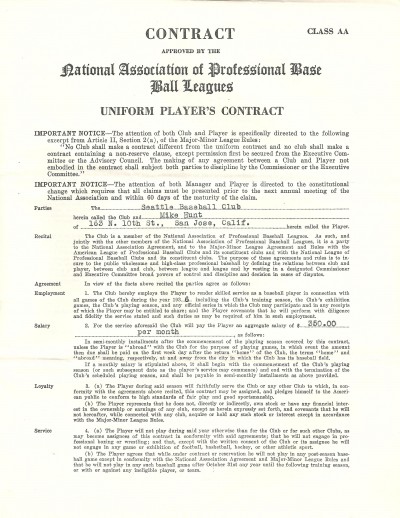
Fans began lining up at the ballpark very early to buy their peanuts, The Times reported. Leo Lassen was also at the microphone to relay every bit of action to the stay-at-homes.”
The crowd turned out to be larger than usual, a packed house of 9,272, and Civic Field probably never looked better.
The Times had two baseball writers there to cover the action against Sacramento, but didnt entrust either to report on what the paper called The Wedding of the Year. For that job, The Times turned to its society reporter, who did not receive a byline.
To the sentimental and appropriate strains of ‘The Indian Love Call,’ played on an electric organ, 9,272 paid guests took their seats in the grandstand and bleachers at Civic Field last evening to witness the dazzling but simple wedding of Miss Charlotte Axelson and Arthur L. Hunt, prominent member of the Seattle Indians and the Pacific Coast Leagues leading home run hitter, The Times account said.
As a choir of 40 men and women, garbed in black and white robes, took their places behind the improvised altar at the pitchers box and lifted their voices in solemn song, the guests had a moment to order peanuts and view the impressive setting for the wedding.
Back of the altar was a huge silver wreath. The steps to the altar were flanked with standards of blue and white delphinium. The aisle from home plate to the altar was bordered by ribboned posts, tied with garlands of pink flowers.
The Times reported that both Seattle and Sacramento players lined up on the first and third-base lines, all holding bats, and that the bridesmaids wore white-tailored suits, dark hats and blouses and carried bouquets of pink roses.
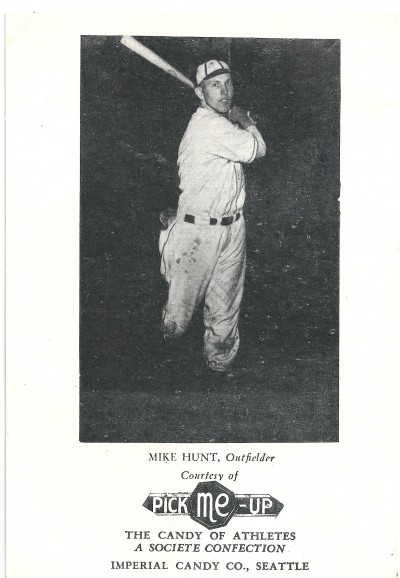
Two of Hunts teammates, pitcher Clarence (Snake Eyes) Pickrel and Jerry Donovan, accompanied Hunt down the aisle, and then Washington Gov. Clarence Martin trotted out the bride, who had wheedled an introduction to Hunt through a girlfriend after watching Hunt blast a home run one night.
The Times society reporter used a Gettysburg Address worth of words to describe the brides wedding attire (well keep it to a white suit with white accessories), naturally referring to her, as are all brides, as lovely.
The 8 p.m. ceremony, conducted by the Rev. Dr. Mark A. Matthews, drew the states crème de la crème. Among the notables listed by The Times: football referee Bobby Morris, Sea Hawks hockey player Cameron Proudlock, Teamsters official Frank Brewster, Superior Court Judge James B. Kinne, state engineer Charlie Davis, Civic Auditorium manager William Coyle, labor leader Dave Beck and jeweler Stacy Shown.
Following the “I Dos,” the largest crowd ever to witness a Seattle wedding cheered as Hunt and his chosen walked down the aisle under an archway of crossed baseball bats held by members of the two teams.
Hunt and his Mrs. raked in the swag. The Indians and Solons presented the couple with a new automobile and Hunts teammates chipped in a 100-piece silver set.
Seattle merchants provided electric appliances, a Silex coffee urn, pots and kettles, silverware, wedding cake, cocktail set, linen, radio, insurance on the car, woolen blanket, shower curtain, table lamp, smoking stand, walnut end table, floor lamp, easy chair, electric roaster and a case of Cashmere Bouquet soap.
Safeway threw in $25 worth of groceries. In recognition of Hunts famous plug, one of the downtown cigar stores anted up five cartons of Beechnut chewing tobacco.
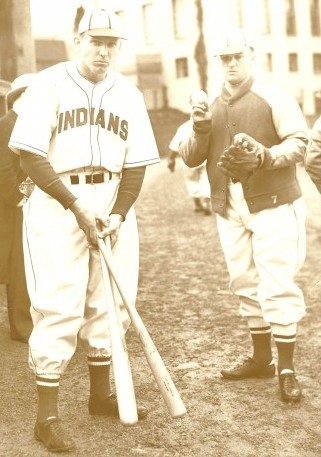
The game started 30 minutes following the wedding and its star turned out to be best man Pickrel, who not only scattered 10 hits and collected a 3-1 win, but socked a two-run homer over the short wall in left in the fifth inning — the first and last home run of Pickrels professional career.
On Dec. 6, 1939, following a season in which he hit .259 in 121 games, the Rainiers conditionally sold the 31-year-old Hunt to Chattanooga of the Southern Association. The condition: that Hunt report to the club.
Enamored with the Northwest, Hunt chose to retire, walking away from a 10-year, PCL career with a batting average of .313, 124 home runs and 506 RBIs. Hunt blasted 124 of his 204 PCL homers during four peak seasons (1934-37), a majority, but certainly not all, at Civic Field.
“He not only hit them out of Seattle’s ballpark, he hit them out of just about every park he played in,” said Vanni, Hunt’s teammate with the Rainiers in 1938 and 1939. He was a low-ball hitter, so he tried to get everyone to throw the ball down to him. When they did, he could hit it a long, long way.
A year after leaving baseball, Hunt put on a light-blue uniform and wide-brimmed Stetson and joined the Washington State Patrol, with which he worked as a state trooper for 28 years, many of them in Ephrata (Grant County). Hunt spent the last five of those years as an aircraft-license inspector. When he retired from the WSP in November, 1968, Hunt returned to Seattle, becoming a King County employee for five years.
Charlotte and Mike remained married for more than 50 years, until her death in 1989.
When over 9,000 people see you get married, youve just got to stay married, Hunt told The Times in 1973. “It was quite a night. Ill say that.
Hunt followed Charlotte seven years later, dying Nov. 25, 1996 in a Federal Way nursing home at the age of 89. He left a son and three grandchildren, and is buried in the Ephrata City Cemetery.
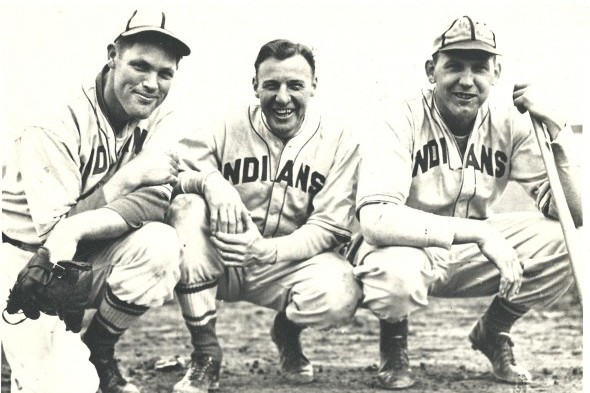
————————————————–
Many of the historic images published on Sportspress Northwest are provided by resident Northwest sports history aficionado David Eskenazi. Check out Davids Wayback Machine Archive. David can be reached at (206) 441-1900, or at seattlesportshistory@gmail.com

8 Comments
Great piece as always. My mom remembers that wedding, and she was just 10 years old at the time…It was a huge deal.
To me, Mike Hunt was to the Seattle Indians what Chuck Klein was to the Philadelphia Phillies: A power hitter on a lousy team who took full advantage of a ballpark with dimensions that treated pull hitters kindly. Civic WAS an awful ballpark (what could a groundskeeper do with an all-hardpan dirt surface, anyway?), but without it, Seattle would’ve been out of pro baseball after Dugdale Park burned down…there just wasn’t money to build a new one until Mr. Sick bought the team from Bald Bill Klepper, who was chronically underfinanced.
On behalf of David Eskenazi, thanks for chiming in, as always. Again, if you have any suggestions for future Waybacks, please let us know.
I did post some ideas a few weeks back, Steve, but felt a little uncomfortable doing something like that on a message board so I pulled it. You guys seem okay with doing it here, though, so here are some possibilities:
1) Seattle was home to one of the top major fastpitch teams in the country for nearly three decades with the Pay’n’Pak/Peterbilt Western/Seafirst teams from the 60’s, 70’s and 80’s. They were the Northwest’s dominant fastpitch team throughout and a few of those guys are in the Softball Hall of Fame.
2) Dugdale Park may be the least-chronicled West Coast ballpark out there, given that it was the first west of the Mississippi with double-decked stands and brought night baseball to Seattle years before they were installed at Crosley Field. I sometimes wonder how long Dugdale would’ve lasted if it hadn’t burned down in 1932. Even Dave might have a hard time finding photos (which is what I’d LOVE to see…they just don’t seem to exist).
3) A decade before the Seahawks, Seattle was home to the Rangers of the Continental Football League, which was a nationwide minor league. A LOT of former Huskies played for the Rangers while Bill Walsh’s first head coaching job was with the San Jose Apaches and Kenny Stabler began his pro career with the Spokane Shockers. Could be an interesting story.
4. Before the Rangers, there was a semipro team called the Seattle Ramblers who were one of the best in the country. Another semipro team with a long history was the Seattle Cavaliers, who began in (I think) the late 40’s under Elmo Hudgens and lasted up to 1990. One of their QBs, Bob Cason out of UPS, attended the Seahawks’ first training camp in 1976 and they had a kicker named Dick Barnes (who was also a State Legislator) who played football and rubgy into his 50’s.
There’s always more (some even more esoteric than those), but I’ll stop there.
THANKS FOR THE IMPUT!
Great piece as always. My mom remembers that wedding, and she was just 10 years old at the time…It was a huge deal.
To me, Mike Hunt was to the Seattle Indians what Chuck Klein was to the Philadelphia Phillies: A power hitter on a lousy team who took full advantage of a ballpark with dimensions that treated pull hitters kindly. Civic WAS an awful ballpark (what could a groundskeeper do with an all-hardpan dirt surface, anyway?), but without it, Seattle would’ve been out of pro baseball after Dugdale Park burned down…there just wasn’t money to build a new one until Mr. Sick bought the team from Bald Bill Klepper, who was chronically underfinanced.
On behalf of David Eskenazi, thanks for chiming in, as always. Again, if you have any suggestions for future Waybacks, please let us know.
I did post some ideas a few weeks back, Steve, but felt a little uncomfortable doing something like that on a message board so I pulled it. You guys seem okay with doing it here, though, so here are some possibilities:
1) Seattle was home to one of the top major fastpitch teams in the country for nearly three decades with the Pay’n’Pak/Peterbilt Western/Seafirst teams from the 60’s, 70’s and 80’s. They were the Northwest’s dominant fastpitch team throughout and a few of those guys are in the Softball Hall of Fame.
2) Dugdale Park may be the least-chronicled West Coast ballpark out there, given that it was the first west of the Mississippi with double-decked stands and brought night baseball to Seattle years before they were installed at Crosley Field. I sometimes wonder how long Dugdale would’ve lasted if it hadn’t burned down in 1932. Even Dave might have a hard time finding photos (which is what I’d LOVE to see…they just don’t seem to exist).
3) A decade before the Seahawks, Seattle was home to the Rangers of the Continental Football League, which was a nationwide minor league. A LOT of former Huskies played for the Rangers while Bill Walsh’s first head coaching job was with the San Jose Apaches and Kenny Stabler began his pro career with the Spokane Shockers. Could be an interesting story.
4. Before the Rangers, there was a semipro team called the Seattle Ramblers who were one of the best in the country. Another semipro team with a long history was the Seattle Cavaliers, who began in (I think) the late 40’s under Elmo Hudgens and lasted up to 1990. One of their QBs, Bob Cason out of UPS, attended the Seahawks’ first training camp in 1976 and they had a kicker named Dick Barnes (who was also a State Legislator) who played football and rubgy into his 50’s.
There’s always more (some even more esoteric than those), but I’ll stop there.
THANKS FOR THE IMPUT!